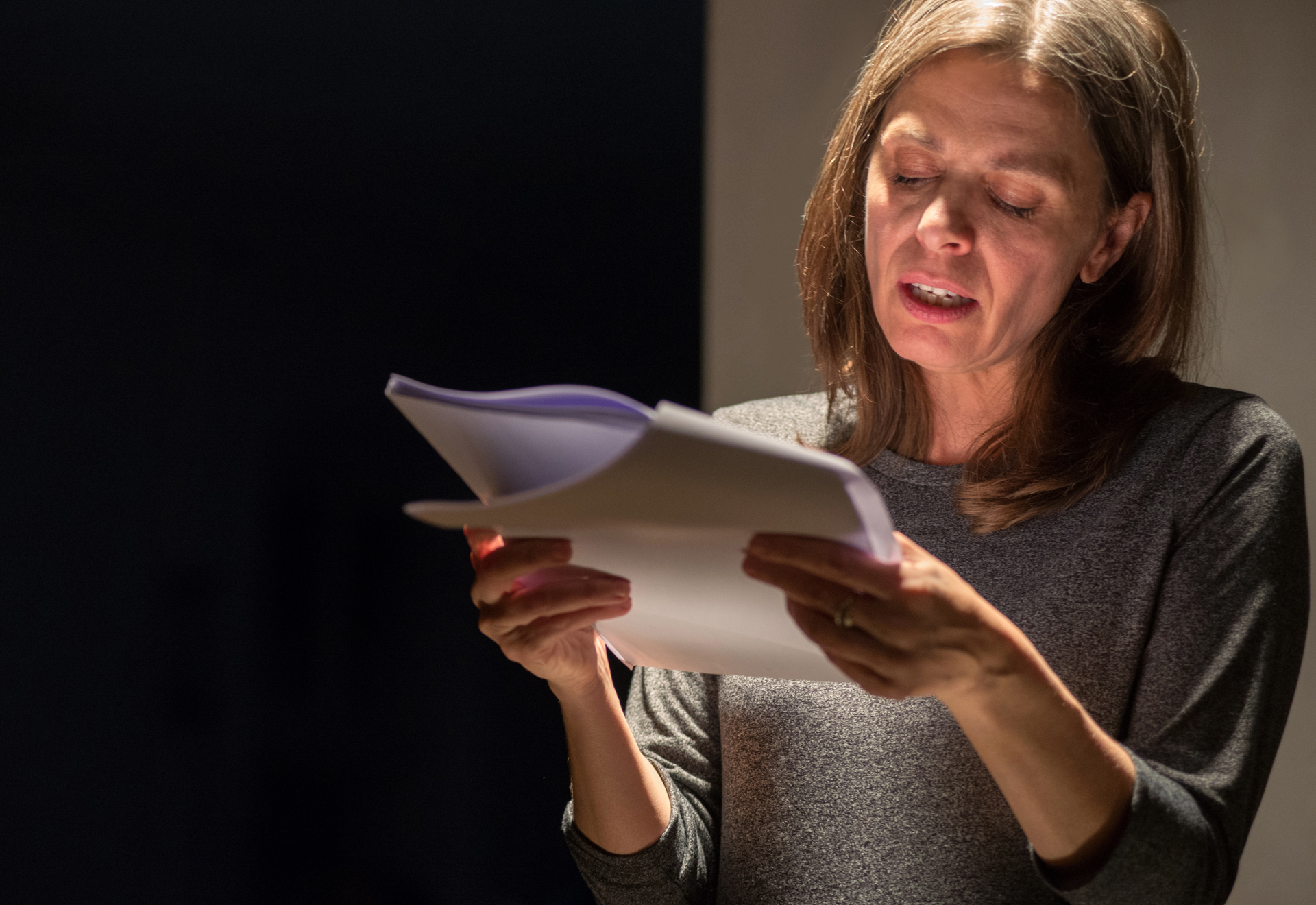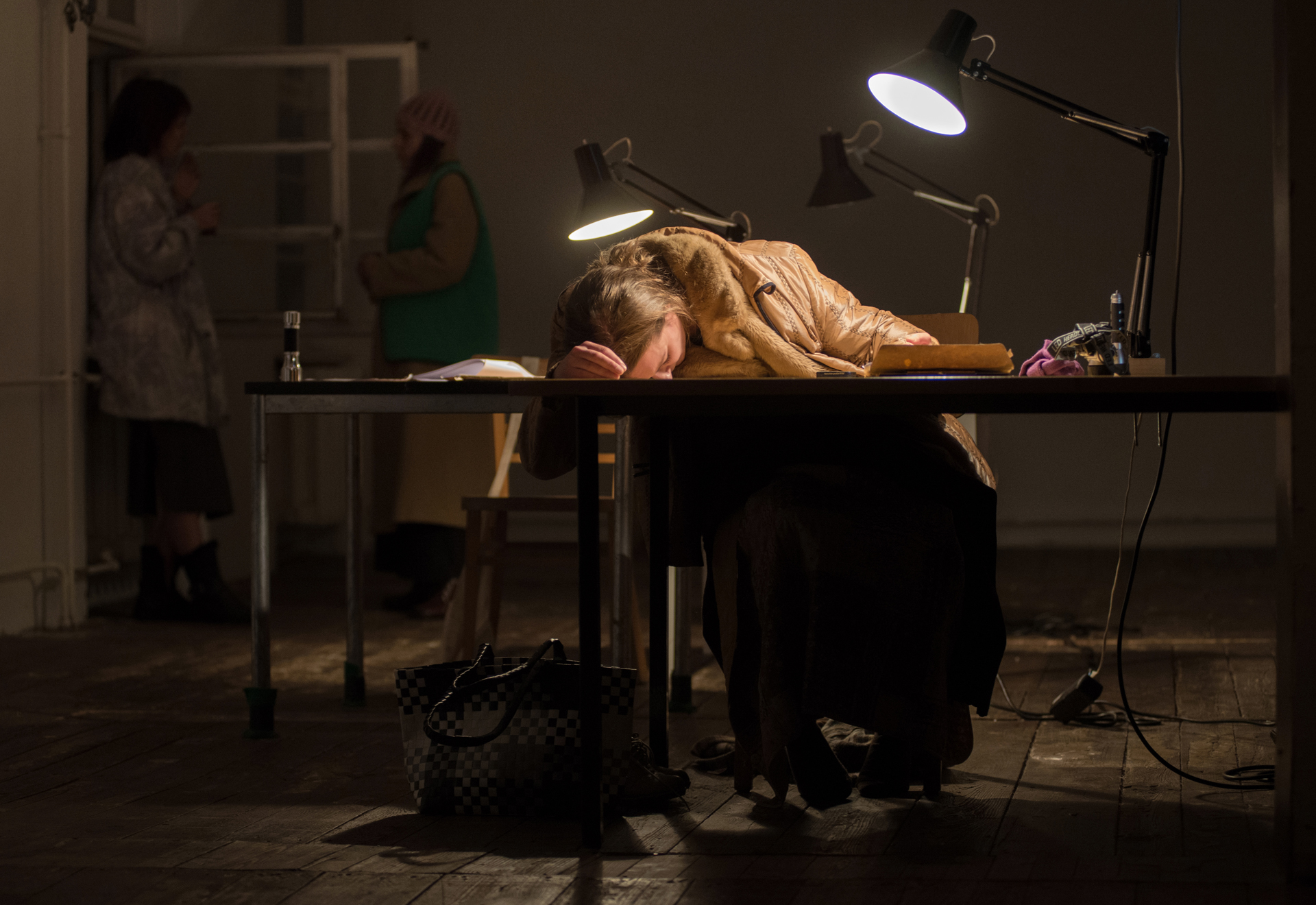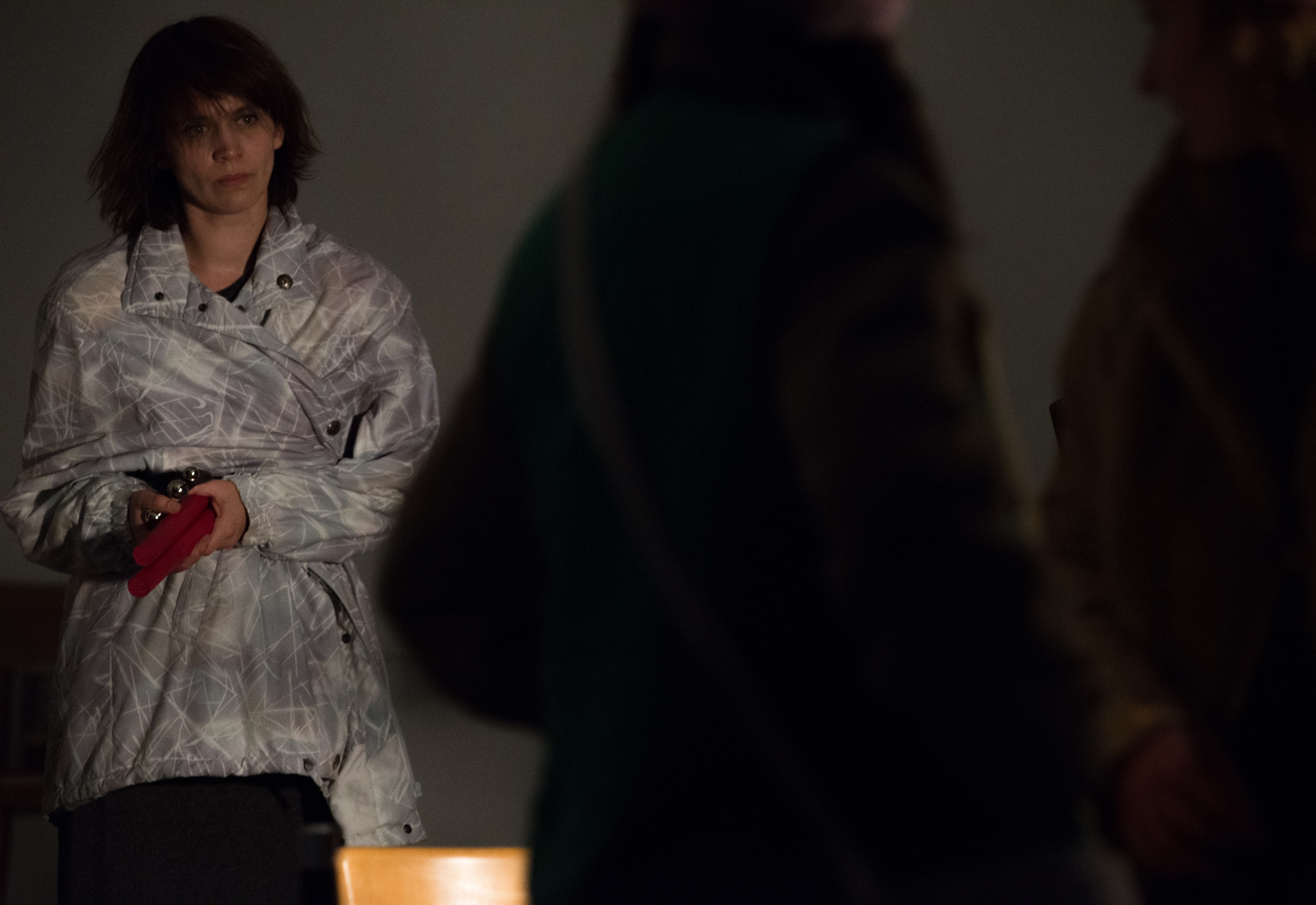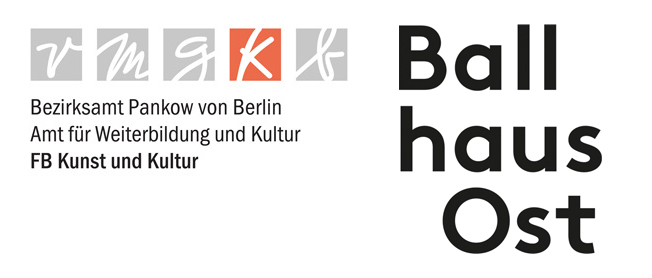A, B, C, D, E, F.
Format: Performance
Premiere: 23 Nov 2015
Venue: Ballhaus Ost
Language: English
Duration: 72 min
Interview: Over-communication and disempeopled bodies
Premiere: 23 Nov 2015
Venue: Ballhaus Ost
Language: English
Duration: 72 min
Interview: Over-communication and disempeopled bodies
Direction, text, performance, design: Chris Gylee, Aslan
Performance: Claudia Basrawi, Sarah Calver, Rahel Savoldelli
Dramaturgical support: Carolina Ortega
Photography: Renata Chueire
Administration: ehrliche arbeit — freies Kulturbüro
Funded by: Bezirksamt Pankow von Berlin, Amt für Weiterbildung und Kultur
To view the documentation film of A,B,C,D,E,F. please email us.
Performance: Claudia Basrawi, Sarah Calver, Rahel Savoldelli
Dramaturgical support: Carolina Ortega
Photography: Renata Chueire
Administration: ehrliche arbeit — freies Kulturbüro
Funded by: Bezirksamt Pankow von Berlin, Amt für Weiterbildung und Kultur
To view the documentation film of A,B,C,D,E,F. please email us.
A,B,C,D,E,F. is a live work for three performers and an audience. Seated at desks in the darkened upstairs rooms of Ballhaus Ost, the performers read a fractured verbal score to a decaying choreography of intermittent light from desktop lamps. The performers are coopted into the ‘machine’ of the score as it attempts combination after combination in a search for meaning. The piece interrogates themes of identity, interchangeability, and how our social status shapes us and our relationships. It takes as its inspiration the manipulation of discourse, questions of plurality of identity in a world of online profiles, the commodification of personhood, and the shifting locus of agency in the face of life experience recast as code.
We do not lack communication. On the contrary, we have too much of it. We lack creation. We lack resistance to the present.
McKenzie WARK, ‘A Hacker Manifesto’ (Version 4.0)
We do not lack communication. On the contrary, we have too much of it. We lack creation. We lack resistance to the present.
McKenzie WARK, ‘A Hacker Manifesto’ (Version 4.0)
The piece is a thematic exploration of the nature of identity, and by extension, our relationships with others, in the context of a world where we are increasingly defined by the accumulation of information that solidifies as our online ‘self’. The piece is, therefore, a response to the increasing commodification through processes which break us down into qualitatively quantifiable code, such as points based immigration systems, online dating websites, and popularity quotients judged by clicks, likes, smiles and number of reposts. As the present becomes increasingly comprehensible through the discourse of futurism and science fiction, the core question of Stanisław Lem’s 1961 novel Solaris is recast. Rather than asking how humankind can communicate meaningfully with nonhuman intelligence, A,B,C,D,E,F. questions, in a world where nonhuman intelligence is a constant intercessor in our interpersonal relationships, how we can continue to communicate meaningfully among ourselves.



RESPONSE
What Does It Want?
An empty, darkened office with the grim, faded air of a government bureau. From where I'm sitting, hidden in the dark myself, the office is only partially visible through a doorway. In the space between, an inscrutable apparatus lies dormant. Three women shuffle into the back room by flashlight and settle at their desks. The machine whirs to life. It is not a “black box”, hiding the calculations that transform input to output. It is completely exposed and deceptively simple: a string of six lights across the ceiling; six tiles lined on the floor beneath, labeled A through F; six texts on A4 paper laying on the tiles; and the three women to read them. As the lights illuminate a letter pair—A-B, C-D, E-F, A-D, A-F, C-B, C-F, E-B or E-D—two of the three women step onto the illuminated tiles and read a text.
There is no choreography, only a set of instructions. The lights, punctuated by mechanical sound cues, say where to stand and when and for how long. That is all the machine does. The texts are not a script, they are treated like objects, like every other part of the machine. But through the cycles of different letter parings, the texts, and the way the women read them, combine and clash in ways that the machine could not have anticipated; something more complex than the algorithm's mindless repetition emerges. Is it meaning? Is it agency? Does this machine want something? And does it want something, specifically, out of these three women?
Why them? Who are they? Spies, cleaning ladies, technicians, prisoners, androids? Despite the office setting, the women don't operate the machine like one would operate a computer or photocopier. It's not clear that they operate it at all. They might be parts of the machine, each playing her part in the algorithm's calculations. Perhaps they wrote the texts, but when they read them aloud, alternating from information that's personal to political to statistical, there is a distance. Perhaps they are just doing their jobs. When they are not called forward to the front room to read their texts, they sit at their desks in the back room, wriggle in and out of their winter coats and boots, or make themselves cups of tea.
There is no choreography, only a set of instructions. The lights, punctuated by mechanical sound cues, say where to stand and when and for how long. That is all the machine does. The texts are not a script, they are treated like objects, like every other part of the machine. But through the cycles of different letter parings, the texts, and the way the women read them, combine and clash in ways that the machine could not have anticipated; something more complex than the algorithm's mindless repetition emerges. Is it meaning? Is it agency? Does this machine want something? And does it want something, specifically, out of these three women?
Why them? Who are they? Spies, cleaning ladies, technicians, prisoners, androids? Despite the office setting, the women don't operate the machine like one would operate a computer or photocopier. It's not clear that they operate it at all. They might be parts of the machine, each playing her part in the algorithm's calculations. Perhaps they wrote the texts, but when they read them aloud, alternating from information that's personal to political to statistical, there is a distance. Perhaps they are just doing their jobs. When they are not called forward to the front room to read their texts, they sit at their desks in the back room, wriggle in and out of their winter coats and boots, or make themselves cups of tea.
And why does the machine need them? After a few different text combinations, it seems clear that A-B, C-D and E-F sync up into coherent conversations or statements, while an A-F or B-D combination is nonsense. I assumed the women (and perhaps I as the viewer) were there to create meaning from the algorithm's blind pairings. But if the point of the algorithm is to pair matching halves of a text, why does it persist in false pairings, again and again? Matching the correct text pairs doesn't even effect a response, the false pairs are not weeded out and the women make no attempt to break out of the machine's instructions. But then, through enough repetition, it dawns on me that even the “true” pairs don't match perfectly. Each of the texts has a crack in it. There are in fact twelve texts, sutured into six. The machine is more unstable than I realized.
With each new pairing, and each new repetition of pairings, more fissures appear in the text. The humans are imperfect copiers, each repetition is not a repetition. The machine is dysfunctional... but could that be the aim? Is dysfunction what the machine has been built to generate? It would explain why humans are used as cogs, they are fragile and fallible, they get tired, they forget. They produce an effect that the machine cannot achieve on its own. I'm reminded of another code made of simple letter pairs, repeated in long strings, copied imperfectly. DNA. Is this why the machine needs unstable elements, so that it can evolve?
Before ending their shift in the office, the women, dressed again in their winter coats and boots, break away from their task in an atavistic gesture of release. They dance and wail and crack sticks together, and it's the only time they do something the machine hasn't instructed. They will likely be back tomorrow night. Maybe to read the same texts again, or maybe to process new strings of letters that the machine cannot understand. But at least in the moment of the dance, they prove that they know something the machine does not.
John-Erik Jordan, 2016
With each new pairing, and each new repetition of pairings, more fissures appear in the text. The humans are imperfect copiers, each repetition is not a repetition. The machine is dysfunctional... but could that be the aim? Is dysfunction what the machine has been built to generate? It would explain why humans are used as cogs, they are fragile and fallible, they get tired, they forget. They produce an effect that the machine cannot achieve on its own. I'm reminded of another code made of simple letter pairs, repeated in long strings, copied imperfectly. DNA. Is this why the machine needs unstable elements, so that it can evolve?
Before ending their shift in the office, the women, dressed again in their winter coats and boots, break away from their task in an atavistic gesture of release. They dance and wail and crack sticks together, and it's the only time they do something the machine hasn't instructed. They will likely be back tomorrow night. Maybe to read the same texts again, or maybe to process new strings of letters that the machine cannot understand. But at least in the moment of the dance, they prove that they know something the machine does not.
John-Erik Jordan, 2016



The above images include photographs by Renata Chueire.
A, B, C, D, E, F. is a ONCE WE WERE ISLANDS production in cooperation with Ballhaus Ost.
Additional thanks to: the team at Ballhaus Ost; John-Erik Jordan; Julia Schell; Enrico D. Wey.
A, B, C, D, E, F. is a ONCE WE WERE ISLANDS production in cooperation with Ballhaus Ost.
Additional thanks to: the team at Ballhaus Ost; John-Erik Jordan; Julia Schell; Enrico D. Wey.